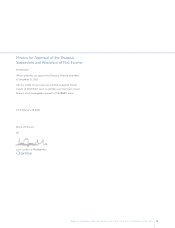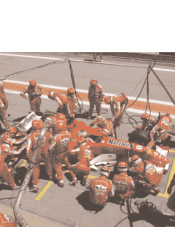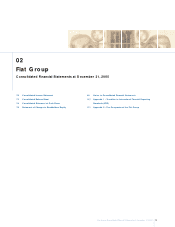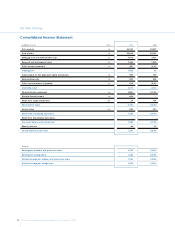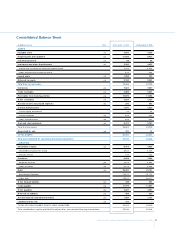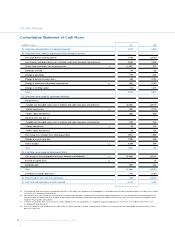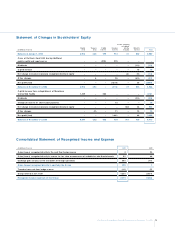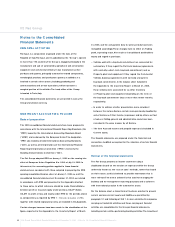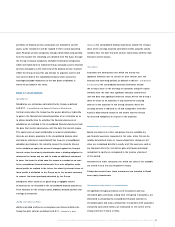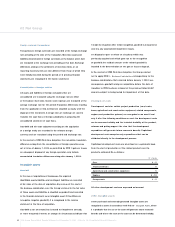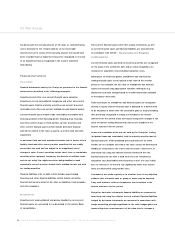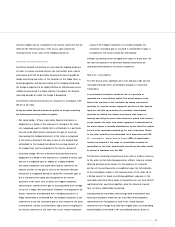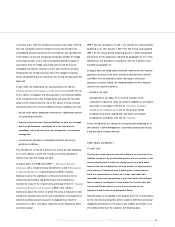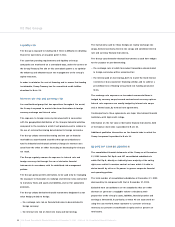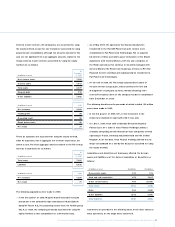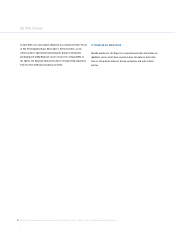Chrysler 2005 Annual Report Download - page 84
Download and view the complete annual report
Please find page 84 of the 2005 Chrysler annual report below. You can navigate through the pages in the report by either clicking on the pages listed below, or by using the keyword search tool below to find specific information within the annual report.
83
Fiat Group Consolidated Financial Statements at December 31, 2005 - N otes to the Consolidated Financial Statements
Such assets are measured at purchase or manufacturing cost
and amortised on a straight-line basis over their estimated
useful lives, if these assets have finite useful lives. Intangible assets
with indefinite useful lives are not amortised, but are tested for
impairment annually, or more frequently whenever there is an
indication that the asset may be impaired.
O ther intangible assets acquired as part of an acquisition of a
business are capitalised separately from goodwill if their fair value
can be measured reliably.
Property, plant and equipment
Cost
Property, plant and equipment are stated at acquisition or production
cost and are not revalued.
Subsequent expenditures are capitalised only if they increase the
future economic benefits embodied in the related item of property,
plant and equipment.All other expenditures are expensed as
incurred.
Property, plant and equipment also include vehicles sold with a buy-
back commitment, which are recognised according to the method
described in the note Revenue recognition if originating from the
Commercial Vehicles business.
Assets held under finance leases, which provide the Group with
substantially all the risks and rewards of ownership, are recognized
as assets of the Group at their fair value or, if lower, at the
present value of the minimum lease payments.The corresponding
liability to the lessor is included in the financial statement as a debt.
The assets are depreciated by the method and at the rates
indicated below.
Leases where the lessor retains substantially all the risks and rewards
of ownership of the assets are classified as operating leases.
O perating lease expenditures are expensed on a straight-line basis
over the lease terms.
Depreciation
Depreciation is calculated on a straight-line basis over the estimated
useful life of the assets as follows:
Depreciation rates
Buildings 2% - 10%
Plant and machinery 8% - 30%
Industrial and commercial equipment 15% - 25%
O ther assets 10% - 33%
Land is not depreciated.
Leased assets
Leased assets include vehicles leased to retail customers by the
Group’s leasing companies under operating lease agreements.
They are stated at cost and depreciated at annual rates of between
15% and 25%.
Investment property
Real estate and buildings held in order to obtain rental income are
carried at cost less accumulated depreciation (charged at annual
rates of between 2.5% to 5%) and impairment losses.
Impairment of assets
The Group reviews, at least annually, the recoverability of the carrying
amount of intangible assets (including capitalised development costs)
and tangible assets, in order to determine whether there is any
indication that those assets have suffered an impairment loss.
If indications of impairment are present, the carrying amount of the
asset is reduced to its recoverable amount.An intangible asset with
an indefinite useful life is tested for impairment annually or more
frequently, whenever there is an indication that the asset may be
impaired.
W here it is not possible to estimate the recoverable amount of
an individual asset, the Group estimates the recoverable amount
of the cash-generating unit to which the asset belongs.
The recoverable amount of an asset is the higher of fair value less
disposal costs and its value in use. In assessing its value in use, the
pre-tax estimated future cash flows are discounted to their present
value using a pre-tax discount rate that reflects current market
assessments of the time value of money and the risks specific to
the asset. An impairment loss is recognised when the recoverable
amount is lower than the carrying amount.W here an impairment
loss on assets other than goodwill subsequently no longer exists or


